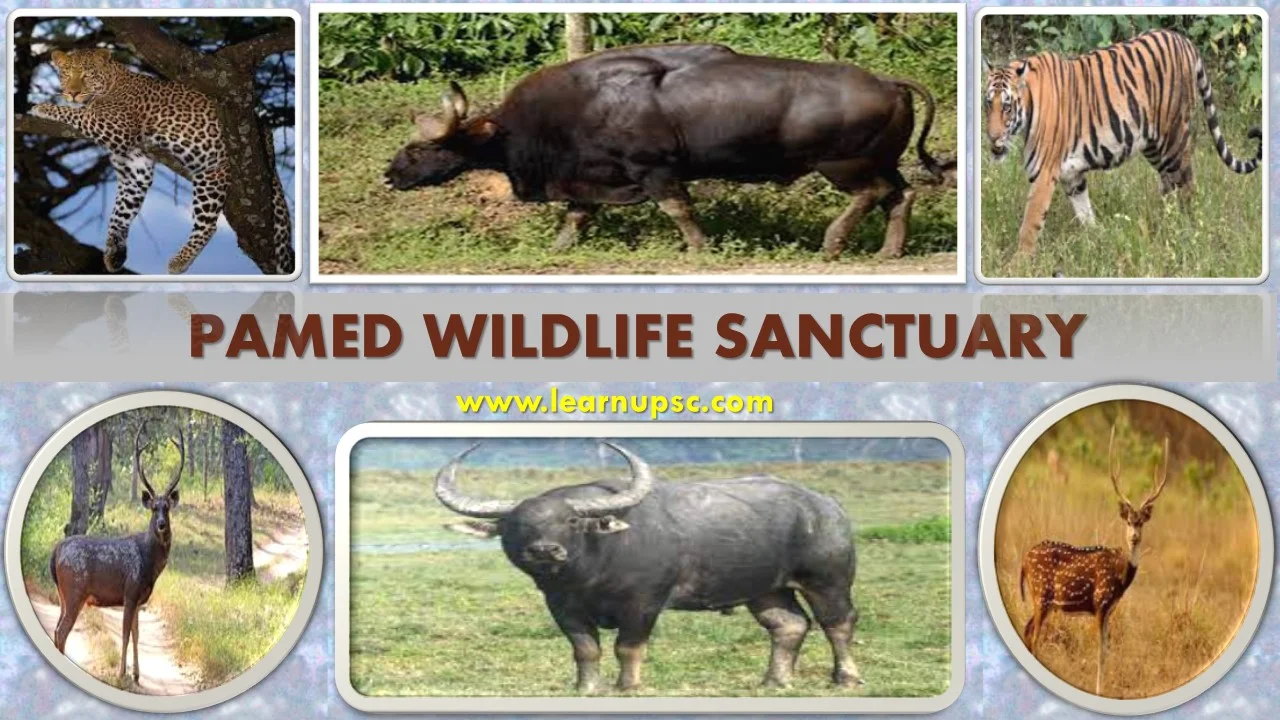Pamed Wildlife Sanctuary UPSC
The Pamed Wildlife Sanctuary, located in the state of Chhattisgarh, India, is a vital and ecologically significant protected area. Its primary objective is the conservation and protection of the Indian bison, also known as gaur, whose population was once in abundance in the region.
|
Table of Contents
|
Pamed Wildlife Sanctuary Location
The Pamed Wildlife Sanctuary is located in the Dantewada district in the southern part of the state of Chhattisgarh, India. It is situated close to the state border with Andhra Pradesh.
Nearest Airport:
The nearest airport to Pamed Wildlife Sanctuary is the Raipur Airport (Swami Vivekananda Airport), which is the main airport serving Chhattisgarh. It is located in Raipur city, which is the capital of Chhattisgarh, and is approximately 380 kilometers (236 miles) away from the sanctuary.
Nearest Railway Station:
The nearest railway station to Pamed Wildlife Sanctuary is the Kirandul Railway Station. It is situated in the Dantewada district itself and serves as the closest railhead to the sanctuary. The approximate distance between Kirandul Railway Station and Pamed Wildlife Sanctuary is around 25 to 30 kilometers (about 15 to 19 miles).
Pamed Wildlife Sanctuary History
The sanctuary was set up in 1983 to address the issue of overabundance in the population of wild bison in the region. The Indian bison, also known as gaur, is one of the largest and most powerful wild cattle species found in the country. The sanctuary was created to provide a protected area for these animals and other wildlife species to thrive.
Pamed Wildlife Sanctuary Area
The Pamed Wildlife Sanctuary covers an area of approximately 262 square kilometers.
Pamed Wildlife Sanctuary Flora
The Pamed Wildlife Sanctuary is known for its rich and diverse flora. The sanctuary's vegetation primarily consists of a mixed deciduous forest, which means it contains a variety of trees and plants adapted to the local climate and soil conditions.
Here are some of the common flora found in the Pamed Wildlife Sanctuary:
- Sal (Shorea robusta)
- Teak (Tectona grandis)
- Mahua (Madhuca longifolia)
- Bamboo
- Semal (Bombax ceiba)
- Harra (Terminalia chebula)
- Bel (Aegle marmelos)
- Amla (Emblica officinalis)
- Jamun (Syzygium cumini)
Pamed Wildlife Sanctuary Fauna (Pamed Wildlife Sanctuary Animals)
The Pamed Wildlife Sanctuary is home to a diverse array of wildlife species. The sanctuary provides a protected habitat for various animals, including both herbivores and carnivores.
Some of the prominent fauna found in the Pamed Wildlife Sanctuary are:
Mammals:
- Indian Bison (Gaur)
- Wild Water Buffalo
- Tigers
- Panthers
- Spotted Deer (Chital)
- Indian Gazelle (Chinkara)
- Sloth Bears
- Wild Boars
- Four-Horned Antelope (Chousingha)
- Wild Dogs (Dholes)
- Hyenas
- Indian Pangolins
- Indian Giant Squirrels
- Sambar Deer
- Nilgai (Bluebull)
- Common Langurs
Birds:
- Peafowl (Indian Peafowl)
- Indian Roller
- Malabar Pied Hornbill
- Indian Pitta
- Indian Grey Hornbill
- Asian Paradise Flycatcher
- Red-vented Bulbul
- Jungle Babbler
- Indian Robin
- Indian Cormorant
Reptiles:
- Indian Rock Python
- Common Indian Monitor
- Indian Chameleon
- Indian Cobra
- Russell's Viper
- Indian Krait
Pamed Wildlife Sanctuary UPSC Questions
Q. In which state is the Pamed Wildlife Sanctuary?
A. The Pamed Wildlife Sanctuary is located in the state of Chhattisgarh, India. It is situated in the Dantewada district, which is in the southern part of Chhattisgarh. The sanctuary is close to the state border with Andhra Pradesh.


No comments:
Post a Comment